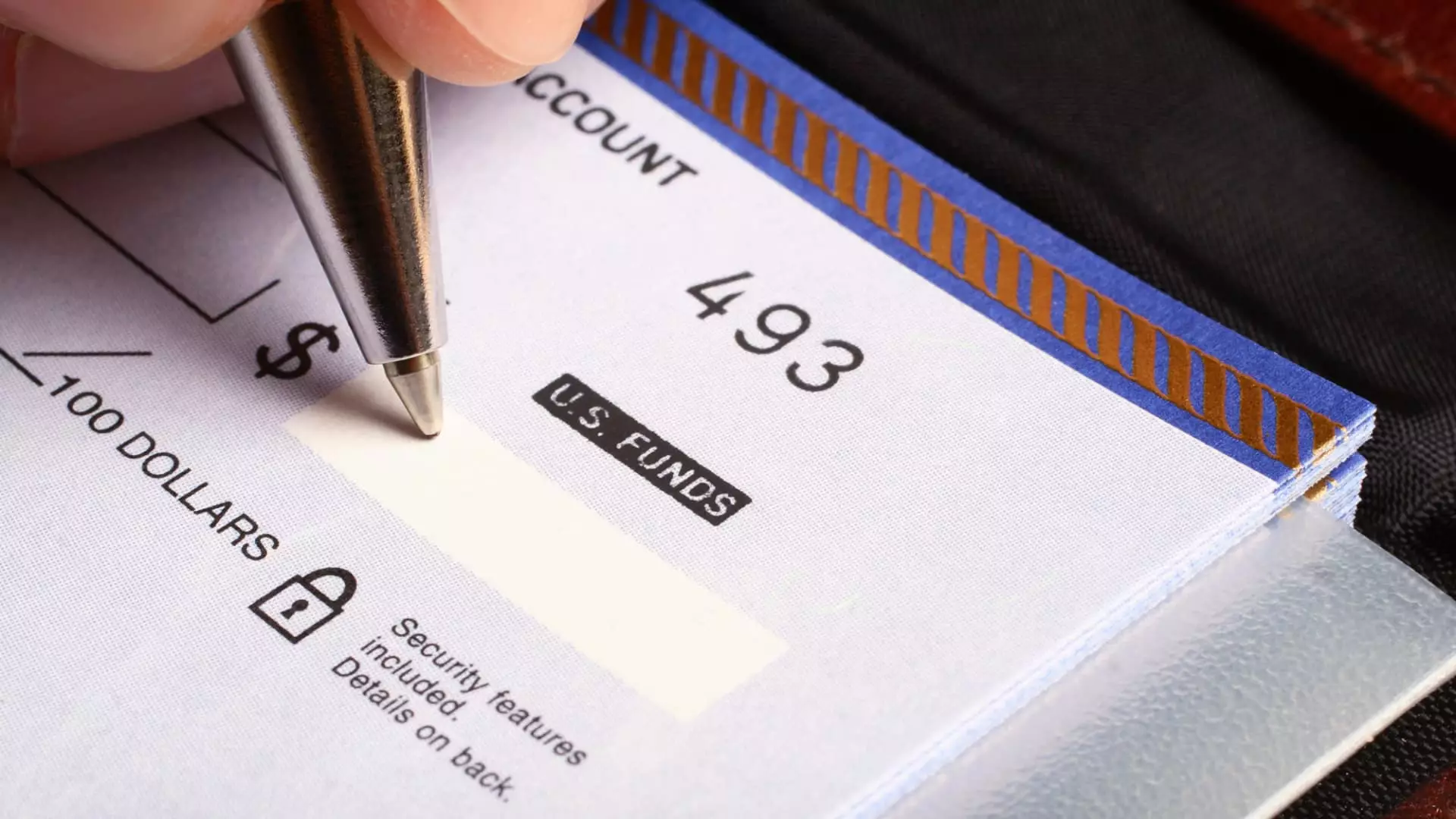The landscape of financial transactions in the United States is undergoing a seismic shift, rendering the paper check an outdated relic of the past. As if tethered to a bygone era, paper checks have faced an ongoing decrease in relevance. The wake-up call came when former President Donald Trump signed an executive order on March 25, directing all federal entities to abandon paper checks in favor of electronic payments by September 30 of this year. With nearly half a million Social Security checks sent via post each month, this shift affects a staggering number of citizens, signaling the end of an era. The Trump administration declared that this initiative aims to “modernize how the government handles money,” likening obsolete payments to “unnecessary costs, delays, and risks of fraud,” effectively branding checks as a hindrance in a rapidly evolving financial ecosystem.
The executive order mandates that all government departments transition to electronic disbursement methods such as direct deposits, digital wallets, and real-time transfers. Is this move a powerful surge toward a long-overdue modernization, or does it risk alienating some of the most vulnerable demographics?
Anecdotes from the Trenches: The Reality of Check Recipients
While banking groups herald the federal directive as a triumph of efficiency, we must not overlook the individuals whose lives are intertwined with these antiquated systems. Among them are the elderly and marginalized populations dependent on Social Security and government assistance. As studies show, behavior around checks tends to skew towards older generations, leaving many to navigate this sudden upheaval without the requisite digital literacy. In spite of significant advancements in payment security—including authentication and data encryption—one can’t help but question: are we leaving behind those who paved the way for the banking systems we now treasure?
Haywood Talcove, CEO of LexisNexis Risk Solutions’ government group, underscores that checks have become a playground for fraudsters, with scams increasingly targeting vulnerable populations. Are we smartly advancing, or simply erasing parts of society that don’t neatly fit into the hyper-digital narrative? The growing urgency for technological adoption can put the elderly at even greater risk, leading to a sense of disillusionment and exclusion among those who struggle to keep pace.
From Checks to Digital Wallets: Bridging the Divide
The decline of checks isn’t merely a passing trend; it reflects profound societal changes accelerated by the COVID-19 pandemic. A 2024 survey reveals that nearly half of Americans had written no checks at all the previous year, shifting towards contactless transactions. This is heartening in some respects, as it showcases our capacity for adaptation; yet, it simultaneously raises alarms about the techno-economics of inclusion. The way forward is not simply to insist on digital payments but to create pathways that bring everyone along.
Scott Anchin, a senior figure in the Independent Community Bankers of America, posits that while society easily embraces these payment innovations, the emotional transition may prove murkier. For many, checks have been more than a transactional vessel; they are imbued with familiarity, tradition, and security.
We are coming to a crossroad where strategic bridging of the divide between traditional and digital payment methods is crucial, so that no demographic feels discarded. We should ask ourselves how we can effectively educate and empower citizens, particularly the elderly, in this transformative journey. A supportive government initiative focused on training and resources might catalyze a smoother transitions while preserving the dignity and service millions rely upon.
The Future: Allergic to Cash?
Fast-forward to today, and those aged 55 and older who once felt secure writing checks are falling prey to rapid changes, in a world increasingly allergic to cash. Financial sociologists and experts like Stephen Quinn argue that check-writing, deeply rooted in the cash economy, is unlikely to vanish overnight. Yet young adults, averages falling below the 35-year mark, are already experiencing a world where peer-to-peer payment apps have replaced traditional financial infrastructures altogether.
Peer-to-peer apps like Venmo and Apple Pay aren’t just novelties; they reflect a fundamental shift in how younger generations conceptualize money, overshadowing checks and cash. Yet these digital conveniences come with caveats—namely, that they lack the FDIC insurance of traditional banks. Thus, while we trailblaze toward modernity, the question remains: are we sacrificing security for convenience?
In the rush to digitalization, we risk disenfranchising those who remain connected to the traditional banking model. Paper checks may seem quaint in comparison to today’s rapid-fire transactions, but is our commitment to technological savvy inadvertently crafting a new exclusion? As we adopt these digital systems en masse, let’s ensure everyone can partake in the promise of a better financial future. Ignoring the complexities of this transition shapes our economic identity in troubling ways that we would be unwise to ignore.

Leave a Reply